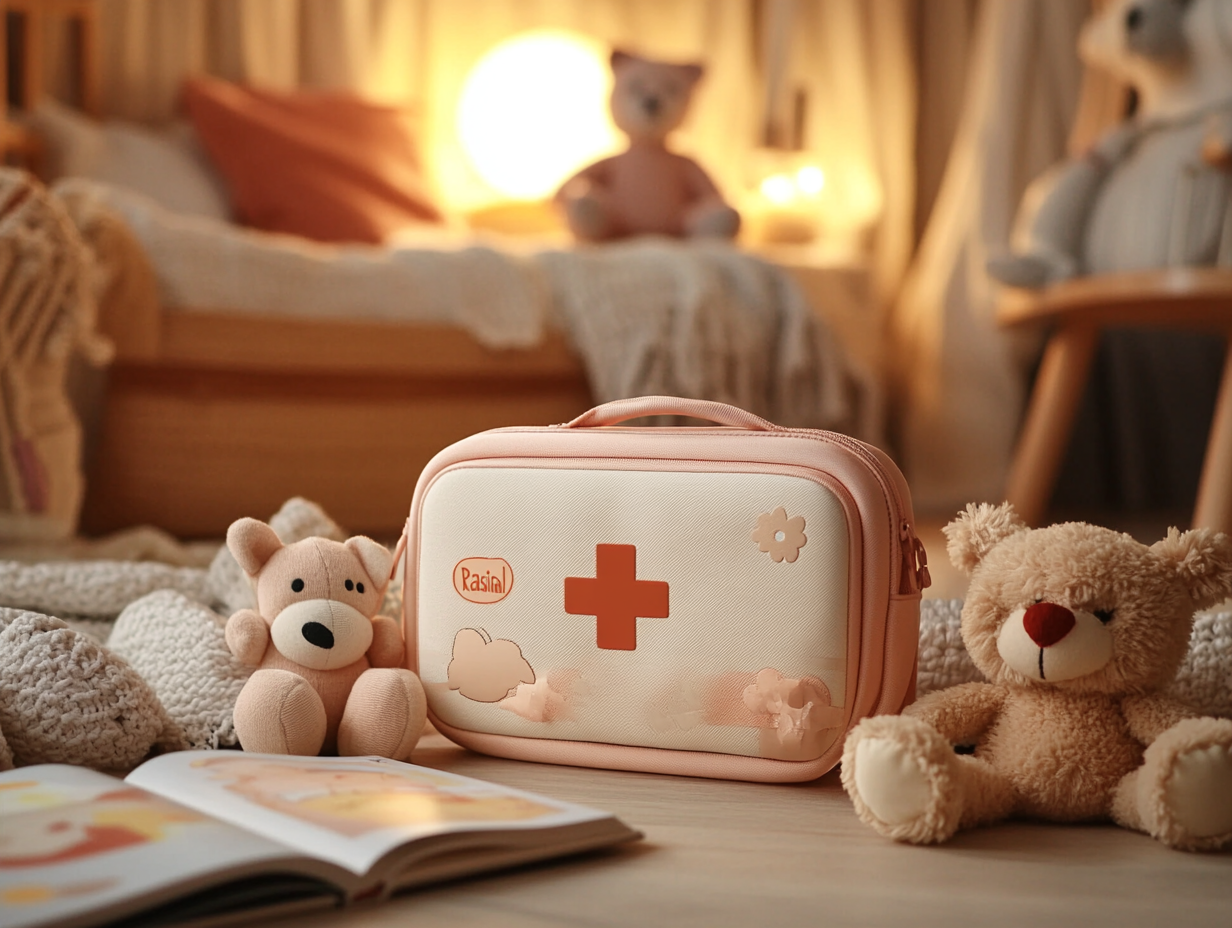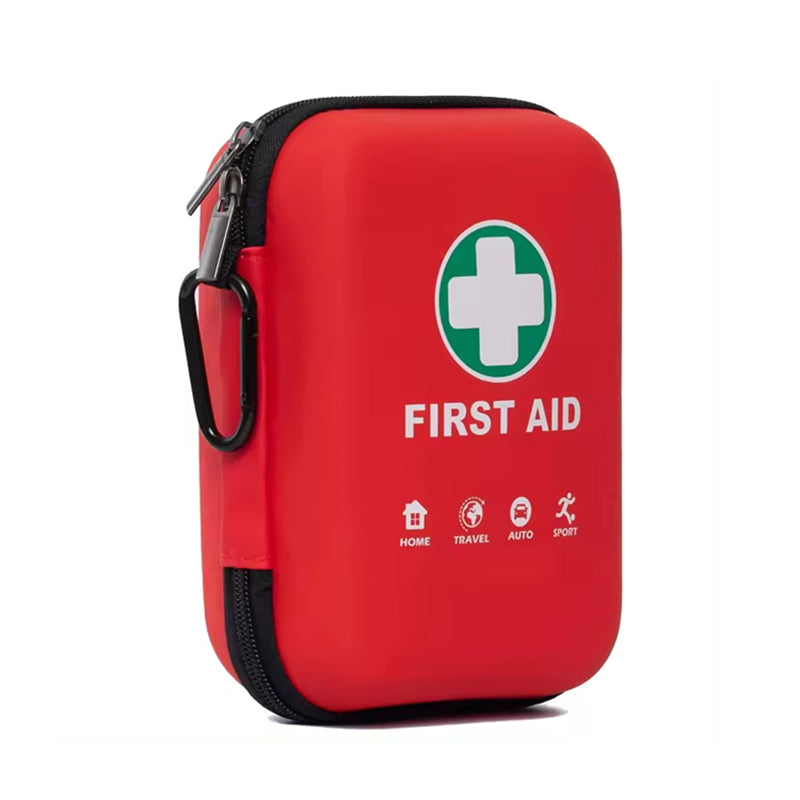
Outdoor activities are an essential part of a child's growth. Whether it's a family picnic, a camping adventure, a hiking trip, or a sports competition, children explore the world in the natural environment, enjoy happiness, and at the same time exercise their bodies and minds.
However, the fun of outdoor activities is often accompanied by unpredictable risks. Sudden situations such as falls and bruises, insect bites, allergic reactions, sports injuries, and even heatstroke can pose a threat to children's safety at any time.
According to the World Health Organization, millions of children are injured during outdoor activities globally each year, and in some cases, serious consequences occur due to the lack of timely treatment.
Therefore, preparing a dedicated outdoor children's first aid kit for children is not only the responsibility of parents but also the key to ensuring children's safety. This article will delve into the importance of outdoor children's first aid kits and how, through scientific design and use, parents can effectively deal with various emergencies, making every adventure of their children safe and worry-free.
Different from home first aid kits, outdoor children's first aid kits need to meet the special requirements of the outdoor environment, and their design should balance portability and practicality. The following are several core design features:
Outdoor activities require carrying a large amount of equipment, so the first aid kit must be small, lightweight, and easy to put into a backpack or hang on the waist. It is recommended to choose a bag made of soft materials (such as nylon), which is not only lightweight but also easy to store.
The outdoor weather is changeable, and rain, mud, or sand may damage the items in the first aid kit. Therefore, the first aid kit should have good sealing performance, be equipped with waterproof zippers or sealed bags to ensure that the internal items are dry and clean.
In rugged mountain roads or jungles, the first aid kit will inevitably be bumped and rubbed. The material should be tough and wear-resistant, such as canvas or high-strength nylon, to ensure that it will not be damaged after long-term use.
The inside of the first aid kit should be designed with multiple compartments or transparent small bags to facilitate the classified storage of medicines, dressings, and tools. In case of an emergency, parents can quickly find the required items and avoid being flustered.
The outside of the first aid kit should have a prominent red cross or fluorescent mark for easy identification by others and to enable them to provide help quickly when needed.
For example, an ideal outdoor children's first aid kit can be a palm-sized waterproof soft bag divided into three layers: one layer stores trauma treatment supplies (such as gauze and adhesive bandages), one layer stores medicines (such as antipyretics and anti-allergy drugs), and the other layer stores tools (such as tweezers and scissors), which is both compact and practical.
During outdoor activities, children may encounter various emergencies. The following analyzes how to use the first aid kit to deal with these situations through specific cases:
Case: Xiaoming accidentally slipped while climbing a mountain, and his knee was abraded and bleeding.
Response: First, the parent uses the disinfectant (such as povidone-iodine) in the first aid kit to clean the wound, removing dirt and bacteria. Then, cover the wound with sterile gauze and fix it with an elastic bandage. If the wound is deep or there is a suspected fracture, use a splint for temporary fixation and send the child to the hospital as soon as possible.
Essentials in the first aid kit: Disinfectant, sterile gauze, bandage, splint.
Case: Xiaohong was stung by a bee during a picnic, and her arm became red, swollen, and painful.
Response: Use the tweezers in the first aid kit to carefully remove the stinger, avoiding squeezing the venom sac. Then, apply an ice pack to the affected area to reduce swelling and pain.
If the child has a history of insect allergy, immediately give the child anti-allergy medicine (such as cetirizine) and observe for any severe symptoms such as difficulty breathing. Seek emergency medical attention if necessary.
Essentials in the first aid kit: Tweezers, ice pack, anti-allergy medicine.
Case: Xiaogang came into contact with pollen while playing outdoors, resulting in sneezing and red, swollen eyes.
Response: Immediately take the child away from the allergen area, rinse the eyes and nasal cavity with normal saline to relieve the symptoms. Then, give the appropriate amount of children's anti-allergy medicine according to the child's weight.
If there are rashes or shortness of breath, seek medical attention as soon as possible.
Essentials in the first aid kit: Normal saline, anti-allergy medicine.
Case: Xiaoli felt dizzy and thirsty during a summer hiking trip and was suspected of having heatstroke.
Response: Quickly move the child to a shaded area to rest, loosen the clothes to dissipate heat. Use the wet towel in the first aid kit to wipe the forehead to cool down, and at the same time, replenish water and electrolytes (such as light salt water).
If the symptoms persist or worsen, send the child to the hospital immediately.
Essentials in the first aid kit: Wet towel, portable water bag.
These cases show that an outdoor children's first aid kit not only needs basic trauma treatment supplies but also should be additionally equipped with anti-allergy medicine, ice packs, insect repellents, and other items according to the characteristics of the outdoor environment to deal with diverse emergencies.
Outdoor activities bring endless fun to children, but potential risks are everywhere. An outdoor children's first aid kit specially designed for outdoor use is a powerful assistant for parents to deal with emergencies.
Whether it is treating a minor abrasion or relieving a severe allergic reaction, the first aid kit can provide help at the first moment, allowing parents to remain calm in a crisis. In addition, parents should also conduct safety education for their children before the activity, teach them how to avoid danger, and how to ask for help from adults in case of an emergency.
In short, a complete outdoor children's first aid kit is like a "seat belt" for every adventure of a child, keeping them safe while exploring nature.



